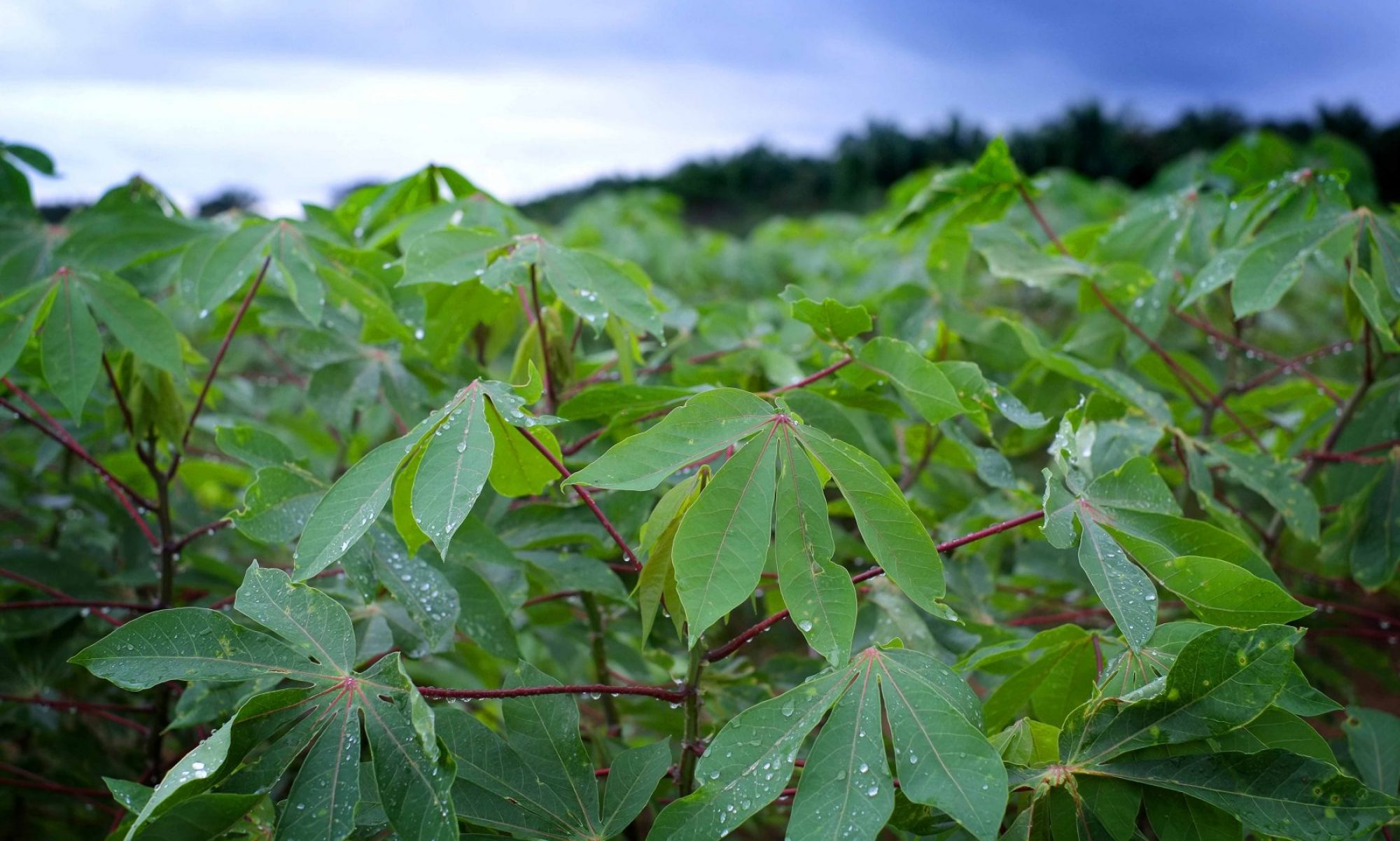
Here, and on the next pages, you can find out what the mycorrhizal symbiosis is and why it is so important globally, and especially about its potential in agriculture in the tropics.
Mycorrhizal symbioses are intimate associations between plant roots and fungi. Although you don’t see them because they are below-ground, almost all plants form mycorrhizal symbioses with fungi. There are different types of mycorrhizal fungi but over 60% of terrestrial plant species have one group of fungi, known as arbuscular mycorrhizal fungi, in their roots. Most plants in temperate and tropical ecosystems form symbioses with these fungi, as do most trees in tropical forests. All of our globally important crops form symbioses with arbuscular mycorrhizal fungi.
Why is the symbiosis important for plants?
Mycorrhizal fungi live in the roots of plants but also produce hyphae (small filaments) that grow out into the soil. All plants need phosphate to grow, but it is difficult for plants to obtain enough phosphate because it does not diffuse fast enough towards roots. Mycorrhizal fungi act as an extension of the root system and absorb phosphate and transport it back to the plant. They exchange the phosphate with the plant for carbohydrates. Because of this, plants can grow better with the symbiosis. In nature, all plants that can naturally form the symbiosis are colonised. Play the animation below to see how the symbiosis aids plant growth.
Mycorrhizal fungi are also known to help some plants during times of drought, can help the plant obtain other essential nutrients and can protect plants against pathogens.
Why are mycorrhizal fungi of global importance?
Phosphate reserves and feeding the global population: All plants need phosphate in order to grow. In most soils, plants have a difficulty getting enough phosphate. Mycorrhizal fungi help plants take up phosphate from the soil. Phosphate is applied to crops and in most places crop yields would not be high enough without addition of phosphate fertilizers. Phosphate is a finite resource and for many reasons phosphate reserves, which are so critical for feeding the world’s human population are becoming critically low. Because of the rapid population growth and the increasing demand for food, there is an increased demand for phosphate fertilizer. This has already lead to some countries banning the export of phosphate fertilizers and stockpiling phosphate for feeding the country’s future population. Additionally, the most effective phosphate fertilizers require energy for production meaning that their prices are linked to the changing price of oil, causing instability in food prices. Because arbuscular mycorrhizal fungi help plants obtain phosphate they could be used to help plants obtain enough phosphate and potentially allow us to use less phosphate fertilizer.
The enormous potential of mycorrhizas in sustainable tropical agriculture
Because mycorrhizal fungi can only help plants take up phosphate that is already present in the soil you might think that if you add fertilizer then these fungi are not needed. However, in many soils, that is not the case. Phosphate diffuses only slowly towards roots, but in addition, phosphate becomes bound to soil particles. This is why plants cannot easily obtain it. Mycorrhizal fungal hyphae (small fungal filaments) can grow towards and absorb the phosphate more efficiently than roots. Many tropical soils are very low in phosphate but are also acidic. In these soils, the phosphate is bound so readily to the soil particles that plants have extreme difficulty obtaining this essential nutrient. When farmers add phosphate, a very large amount of it ends up bound to soil particles and is not available to the plant even though it is there. Mycorrhizal fungi can still obtain that phosphate. The traditional approach of farmers and agronomists is to just add more and more fertilizer but this is extremely expensive and inefficient. Another approach is to use mycorrhizal fungi and not add so much phosphate fertilizer.
If you are interested in mycorrhiza application in the tropics then see my pages about their use in agriculture and our applied research in Colombia
Ecology, plant diversity and global carbon and phosphate cycles
We already know that diversity of mycorrhizal fungi plays a key role in promoting plant diversity and productivity – see the photo at the top of this page to see one effect on plant diversity. It seems likely that this important symbiosis also plays a key role in both global carbon and phosphate cycles. So far, this contribution has been little investigated. However, we know that about 20% of plant photosynthate is directed below-ground to mycorrhizal fungi. This ends up in the hyphal filaments which have a high turnover. So a lot of carbon is sequestered in the soil via the symbiosis. In addition, given that the symbiosis plays a key role in plant phosphate nutrition and in moving phosphate from the soil to the plant, it is a key link in the phosphate cycle.
* Visit my other pages Genetics and Colombia to find out about my groups basic and applied research*
More reading
If you want to know more in detail about the mycorrhizal symbiosis then I recommend the excellent book The Mycorrhizal Symbiosis by S.E. Smith & D.J. Read, Academic Press. which is available at all good online bookstores
